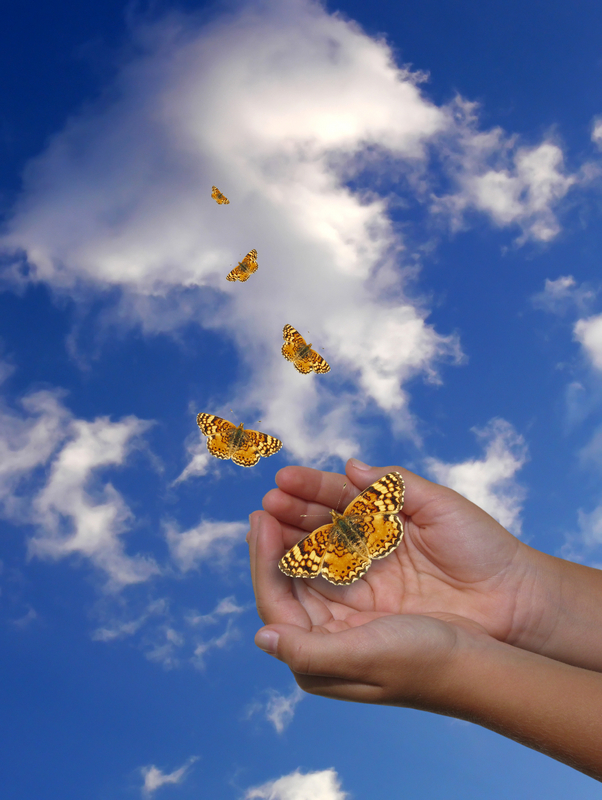 The other day a friend was telling me about being at a party where she heard an adult saying to a girl in her late teens, “Wow, look how tall you’re getting!” The girl immediately blushed and slumped her shoulders, as if trying to shrink from view. She looked down and mumbled, “I hope I stop growing soon.”
The other day a friend was telling me about being at a party where she heard an adult saying to a girl in her late teens, “Wow, look how tall you’re getting!” The girl immediately blushed and slumped her shoulders, as if trying to shrink from view. She looked down and mumbled, “I hope I stop growing soon.”
It’s easy to forget the intense self-consciousness that is so much a part of girlworld. But if we think back, even the most extroverted of us can remember those moments when we felt as if a spotlight was shining just on us, and the whole world was staring and seeing (what we perceived as) our flaws.
Like the girl at that party, I thought that I needed to change myself. In my diary when I was 14, I lamented the fact that the plastic surgeon told me he couldn’t fix the burn scars I have on my neck and down one arm. I covered them up with long sleeves instead, no matter how hot it was. I believed those scars meant I would never be loved.
Melodramatic much? Sure, but that fear was painfully real at the time.
When a girl says she’s going to “die” because she has to give a 5-minute talk in class, it sounds like a total overreaction—but that may be how she truly feels. Self-consciousness and shyness come out in girls blushing, clamming up around new people to the point of seeming rude, underachieving or dropping out of activities they’re good at so that they don’t outshine their friends, apologising or even getting angry when they receive a compliment. Binge drinking and other risky behaviour can also be misguided ways of handling social stress. This is all pretty puzzling to adults—unless we remind ourselves what it was like to be a teenager, simultaneously wanting to stand out and fit in.
With all that we have learned and experienced, we can help the shrinking violets in our lives find their inner Amazon: their true strong, confident self who always speaks her truth . . . and stands up to her full height!
Know the power of your words. No one spoke up to give the teenage girl at the party some perspective. In fact, one woman nodded and said, “Oh yes, you want to be able to wear high heels.” The subtext: if you grow too tall, you’ll tower over any potential date and will be doomed to a sad, lonely, high-heel-less spinsterhood. (Not only were the girl’s fears reinforced, they were reinforced with utter nonsense!)
To her, and to all girls, I say: whether you’re short or tall or somewhere in between, you are beautiful and you will be loved. And it won’t make a speck of difference whether the bottom of your wardrobe is crammed with Birkenstocks or Manolo Blahnik stilettos. To grown-ups, I say: we all have to be careful with our words.
Eat an elephant. For some girls, social occasions can be especially hard. Michaela, one of Enlighten’s Facebook friends, stands in front of groups of strangers and talks every day for her job, but she was “cripplingly shy” when she was a girl. Her advice to girls is to start small:
You can eat an elephant if you take small enough bites, right? So think about one thing you’d like to work on that challenges you in social settings, and give yourself one small goal. For example, maybe think about saying hello to just one person you’ve not met before. If you manage it, that’s great! Just one hello. Then build from there. . . . The more you do it, the easier it gets.
Socialise. Try to create opportunities for your shrinking violet to get to know other girls in a nonthreatening, nonstressful environment. This will help her learn the skills she needs to break the ice and make friends. Organise one-on-one opportunities for her to hang out with another girl at your place. Girl guides and other fun community or church youth groups can also be a great way to gently introduce girls to social situations that may otherwise make them anxious.
Practise and prepare. For girls who become overly anxious about public occasions, being fully prepared can be a real confidence booster. Zerlinda, another Enlighten Facebook fan, says she got over her adolescent dread of public speaking by “doing lots of practice, being thorough, being informed, knowledgeable, prepared”. Michaela had a similar strategy for social events: she would visualise how she’d like the social event to go and the kind of things she’d like to say and do.
Choose a role model. Zerlinda looked towards people she admired for ways to become less shy:
I don’t compare myself to anyone, however, I have role models who I have learnt from or who have inspired me. I have adapted those qualities that impressed me, to suit my own style and requirements.
Parents are the most important role models of all, so look inwards, too. How do you respond when someone gives you a compliment? Do you sometimes struggle to find your voice to express your beliefs and feelings?
Find your inner Amazon. I recommend that girls spend some quiet time visualising their own inner Amazon, who is strong and powerful, and who they can summon up whenever their confidence gets wobbly. At the end of my book, The Butterfly Effect, I give a full visualisation exercise that girls in our workshops find really empowering. (It’s great for women, too.)
Celebrate difference. Our aim should be to support girls and help them develop the confidence to be themselves—not to force everyone to be outgoing. Some people are naturally quieter than others. If a girl is especially shy and quiet in class or is really struggling in the playground, then of course we need to help her develop the skills to contribute in class and in social groups—while always respecting individual differences. In fact, girls who are naturally more introverted can actually turn that tendency into a helpful strategy. Zerlinda says:
I learnt to accept myself as being an introvert and learnt to cope by ensuring I have my quiet/alone times to refresh, de-stress and find peace. I made a conscious decision to accept myself as an individual; to accept my flaws; highlight my abilities. I made a conscious decision to like who I was/am . . . to love me for being me!
Do you have any other strategies you’d like to share to help girls overcome self-consciousness and shyness? I’d love to hear what works for you.
P.S The beautiful posters featured here are part of a series I commissioned and are available at our Enlighten shop. I think every young woman should have images like these adorning their bedroom walls!





